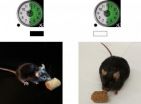(Press-News.org) The role that new low carbon technologies can play in helping the UK meet its targets for reducing greenhouse gas emissions and moving towards a green economy have been highlighted today with the publication of three in-depth reports into core areas of innovation.
These three new analyses, Technology Innovation Needs Assessments (TINAs), cover non-domestic buildings, industrial emissions efficiency, and domestic buildings and are part of a series that spans 11 low carbon technology areas. The TINAs examine the potential for innovation in these technologies and assess the economic benefits to the UK. This work will also help inform the prioritisation of public and private sector investment to ensure these technologies reach their full potential.
Energy and Climate Change Minister, Greg Barker announced the publications today while visiting the University College London Energy Institute.
The work has been undertaken by the Low Carbon Innovation Coordination Group (LCICG), which is made up of a range of different bodies including the Department of Energy and Climate Change (DECC), the Department for Business, Innovation and Skills (BIS), the Carbon Trust, the Energy Technologies Institute (ETI), the Technology Strategy Board (TSB), the Scottish Government, Scottish Enterprise, Research Councils UK (RCUK) represented by the Engineering and Physical Sciences Research Council (EPSRC), and other organisations with significant low carbon innovation interests.
Key findings of the Technology Innovation Needs Assessments (TINAs):
Domestic Buildings: As energy use in homes accounts for about one quarter of the UK's total greenhouse gas emissions, innovation in the domestic buildings sector represents a significant opportunity to help meet the UK's emissions targets as well as providing value through avoided energy costs, amounting to savings of 73 mega tonnes CO2 and c. £16 billion by 2050. Innovation could also help create export opportunities that could contribute an estimated £1.7 billion to GDP by 2050.
Public sector support will be required to unlock this value, as there are significant market barriers across the sector to overcome.
Non-Domestic Buildings: The energy used by non-domestic buildings accounts for approximately 18% of UK carbon emissions. The portfolio of non-domestic buildings is diverse and by 2050, total UK non-domestic floor area is expected to increase by 35%, while 60% of existing buildings will still be in use.
Innovative energy saving measures in non-domestic buildings sector represent a significant opportunity help meet emissions targets, as well as providing value through avoided energy costs, amounting to savings of 86 mega tonnes CO2 and c. £13 billion by 2050. Innovation could help create export opportunities that could contribute an estimated £1.7 billion to GDP by 2050.
Industrial Energy Efficiency: Emissions reduction opportunities in UK industries present tremendous potential to generate energy, save carbon and reduce cost of operations. The abatement potential in the key emitting industries in the UK is in the range of 270-500 mega tonnes with cost savings of £17-32 billion by 2050. Innovation is critical to enable deployment and reduce cost as the technology commercialises.
Public sector support for innovation is necessary to maintain the UK's industrial presence and competitiveness in the global market. Innovation will also boost the UK's share of global market and could contribute an additional £3.9 billion (£1.5-6.5 billion) to the UK GDP by 2050.
###
Notes to Editors
1. The TINA summaries and further details on the LCICG can be found on the LCICG website.
2. The Government's Low Carbon Innovation Coordination Group (LCICG) brings together the major public-sector backed funders of low carbon innovation in the UK to work together to coordinate their activities and to maximise the impact of government investment in innovation. Its core members include DECC, BIS, Carbon Trust, Energy Technologies Institute, Scottish Government; Scottish Enterprise; Technology Strategy Board, and the Engineering and Physical Sciences Research Council. Several other organisations, including the other Devolved Administrations, are represented as associate members.
3. The LCICG's TINA Project is collaborative effort involving all members of the LCICG group and aims to identify and value the key innovation needs of specific low carbon technologies, in order to inform the prioritisation of public sector investment in low carbon innovation.
4. The TINA analytical framework was developed and implemented by the Carbon Trust with contributions from all core LCICG members as well as input from numerous other expert individuals and organisations.
5. Each TINA analyses the potential role of the technology in the UK's energy system; estimates the value to the UK from cutting the costs of the technology through innovation; estimates the value to the UK of the green growth opportunity from exports; assesses the case for UK public sector intervention in innovation; and identifies the potential innovation priorities to deliver the greatest benefit to the UK.
6. There are 11 TINAS in total covering the following areas:
Bio-energy
Carbon Capture and Storage
Domestic Buildings
Electricity Networks & Storage
Heat
Hydrogen
Industrial Energy Efficiency
Marine
Non-domestic Buildings
Nuclear Fission
Offshore Wind
7. Engineering and Physical Sciences Research Council (EPSRC)
The Engineering and Physical Sciences Research Council (EPSRC) is the UK's main agency for funding research in engineering and the physical sciences. EPSRC invests around £800 million a year in research and postgraduate training, to help the nation handle the next generation of technological change. The areas covered range from information technology to structural engineering, and mathematics to materials science. This research forms the basis for future economic development in the UK and improvements for everyone's health, lifestyle and culture. EPSRC works alongside other Research Councils with responsibility for other areas of research. The Research Councils work collectively on issues of common concern via Research Councils UK.
New low carbon TINA reports
2012-11-12
ELSE PRESS RELEASES FROM THIS DATE:
Babies rely on words to 'decode' underlying intentions of others
2012-11-12
EVANSTON, Ill. --- A new Northwestern University study shows the power of language in infants' ability to understand the intentions of others.
As the babies watched intently, an experimenter produced an unusual behavior--she used her forehead to turn on a light. But how did babies interpret this behavior? Did they see it as an intentional act, as something worthy of imitating? Or did they see it as a fluke? To answer this question, the experimenter gave 14-month-old infants an opportunity to play with the light themselves.
The results, based on two experiments, ...
Scientists take objective look at terms 'least toxic pesticides' applied as 'last resort'
2012-11-12
Recommendations and decisions to use "least toxic pesticides" and "pesticides as a last resort" have flourished in the last decade, but according to three scientific organizations – the Weed Science Society of America (WSSA), the American Phytopathological Society (APS) and the Plant-Insect Ecosystems Section of the Entomological Society of America (P-IE ESA) – these are not the correct approaches to the pesticide component of an Integrated Pest Management (IPM) program.
The three organizations have joined to take an objective look at the problems associated with "least ...
Which U.S. Presidents Served in the Military? New Infographic from iFreedom Direct has the Answer
2012-11-12
iFreedom Direct, a dedicated VA-approved lender serving military members, celebrates Veterans Day 2012 by debuting an informative new graphic on its two company websites and Facebook page. The infographic entitled Beyond Commander in Chief features a timeline of the 44 Presidents and their terms along with 24 headshots of those who served their country in the Armed Forces before calling the White House their home.
Of course, George Washington started it all when he was named Commander in Chief of the Continental Army in 1775 -- even before being elected President. ...
Systematic incarceration of African American males is a wrong, costly path
2012-11-12
Mental health experts from Meharry Medical College School of Medicine have released the first comprehensive report on the correlation between the incarceration of African American males and substance abuse and other health problems in the United States. Published in Frontiers in Psychology on the 12th of November, the report looks at decades of data concerning the African American population rates of incarceration and subsequent health issues. The authors conclude that the moral and economic costs of current racial disparities in the judicial system are fundamentally avoidable, ...
Report offers new guidance on family involvement of child abuse case reviews
2012-11-12
Child protection professionals are to be offered new guidance on how best to involve families in the case reviews that follow the death or serious injury of a child as a result of abuse or neglect.
A report being launched today (Monday November 12) will reveal the results of a study led by experts at The University of Nottingham and commissioned by the British Association for the Study and Prevention of Child Abuse and Neglect (BASPCAN).
The research explored the personal experiences of both professionals and families to make recommendations on best practice in this ...
Early stress may sensitize girls' brains for later anxiety
2012-11-12
MADISON — High levels of family stress in infancy are linked to differences in everyday brain function and anxiety in teenage girls, according to new results of a long-running population study by University of Wisconsin-Madison scientists.
The study highlights evidence for a developmental pathway through which early life stress may drive these changes. Here, babies who lived in homes with stressed mothers were more likely to grow into preschoolers with higher levels of cortisol, a stress hormone. In addition, these girls with higher cortisol also showed less communication ...
Climate change threatens giant pandas' bamboo buffet – and survival
2012-11-12
China's endangered wild pandas may need new dinner reservations – and quickly – based on models that indicate climate change may kill off swaths of bamboo that pandas need to survive.
In this week's international journal Nature Climate Change, scientists from Michigan State University and the Chinese Academy of Sciences give comprehensive forecasts of how changing climate may affect the most common species of bamboo that carpet the forest floors of prime panda habitat in northwestern China. Even the most optimistic scenarios show that bamboo die-offs would effectively ...
It's not just what you eat, but when you eat it
2012-11-12
PHILADELPHIA - Fat cells store excess energy and signal these levels to the brain. In a new study this week in Nature Medicine, Georgios Paschos PhD, a research associate in the lab of Garret FitzGerald, MD, FRS director of the Institute for Translational Medicine and Therapeutics, Perelman School of Medicine, University of Pennsylvania, shows that deletion of the clock gene Arntl, also known as Bmal1, in fat cells, causes mice to become obese, with a shift in the timing of when this nocturnal species normally eats. These findings shed light on the complex causes of obesity ...
Using rust and water to store solar energy as hydrogen
2012-11-12
How can solar energy be stored so that it can be available any time, day or night, when the sun shining or not? EPFL scientists are developing a technology that can transform light energy into a clean fuel that has a neutral carbon footprint: hydrogen. The basic ingredients of the recipe are water and metal oxides, such as iron oxide, better known as rust. Kevin Sivula and his colleagues purposefully limited themselves to inexpensive materials and easily scalable production processes in order to enable an economically viable method for solar hydrogen production. The device, ...
A better brain implant: Slim electrode cozies up to single neurons
2012-11-12
ANN ARBOR—A thin, flexible electrode developed at the University of Michigan is 10 times smaller than the nearest competition and could make long-term measurements of neural activity practical at last.
This kind of technology could eventually be used to send signals to prosthetic limbs, overcoming inflammation larger electrodes cause that damages both the brain and the electrodes.
The main problem that neurons have with electrodes is that they make terrible neighbors. In addition to being enormous compared to the neurons, they are stiff and tend to rub nearby cells ...

